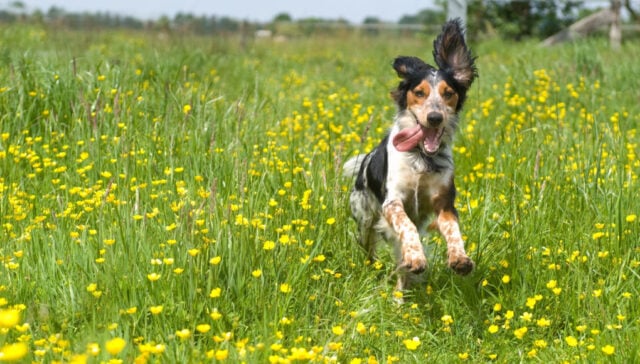
Table of Contents
No one is as enthusiastic as your dog to go out in spring.
This time, however, as the last pile of snow melts, you noticed something different with your dog.
Sure, the months of stay in the house made your dog yearn for the outside environment.
But your dog's impulsive energy seems to be too much.
It's restless, impulsive, and hyperactive; something that you just noticed right now.
Well, that seems to be a case of spring fever. And yes, it's a real thing—even with dogs.
So, in this blog, we’ll discuss everything that you need to know about spring fever in dogs.
We'll also talk about the following in this article:
- Do dogs get spring fever?
- How long does spring fever last in dogs?
- How do dogs get spring fever?
- What are the dog spring fever symptoms?
- How do you deal with spring fever in dogs?
- What are the dangers of spring fever in dogs?
Without further ado, let’s start!
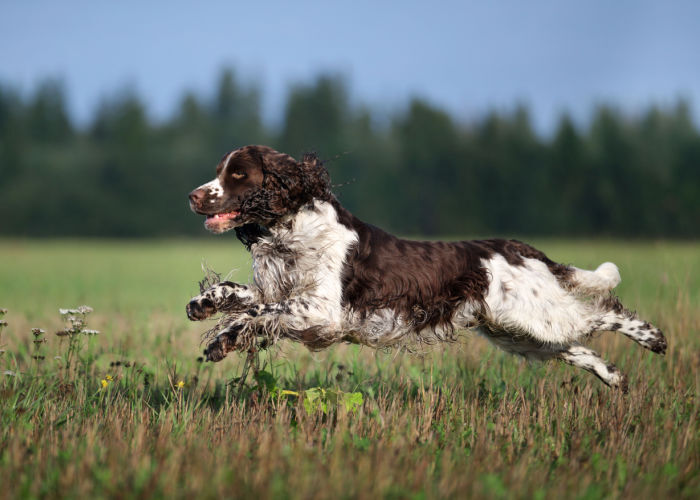
Spring Fever in Dogs: What is it?
Dog spring fever refers to the psychological response of dogs to changing climates.
This phenomenon more likely happens as the climate shifts from winter to spring.
And wouldn't you know it, but we humans can experience spring fevers too!
As Michael Terman, Ph.D. from Columbia University remarked, “Spring fever is not a definitive diagnostic category.”
He also added:
But I would say it begins as a rapid and yet unpredictable fluctuating mood and energy state that contrasts with the relatively low [of the] winter months that precede it.
That being said, even if we also experience spring fever, dogs experience its effects stronger.
This is because dogs have heightened senses which are far more powerful than humans.
So, how long does spring fever last in dogs?
Typically, spring fever last throughout the whole spring!
This means that your dog may stay energetic starting from March to June.
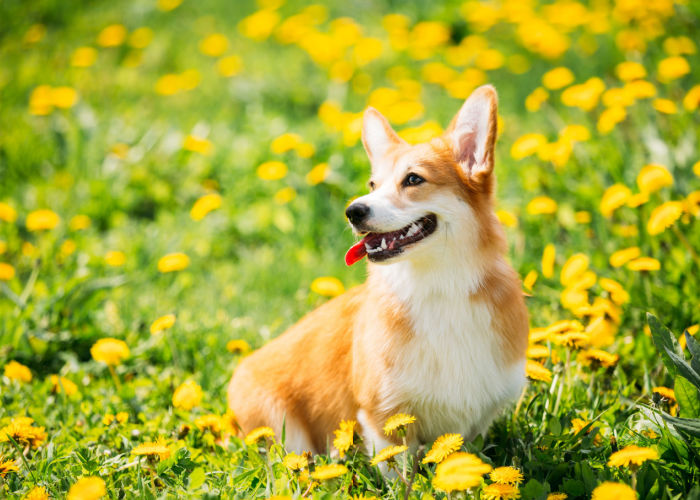
How Do Dogs Get Spring Fever?
You may be wondering how dogs get spring fever.
The common misconception about spring fever for dogs is it works like an infection.
Many people and dog owners treat it like a disease that their dogs acquire.
And like many contagious diseases, the symptoms will show up as per the stages of infections.
But rather than treating it as a fever, spring fever in dogs actually works like an allergy instead.
Dogs will get this psychological response when they are exposed to certain triggers.
And spring has a lot of these factors that can activate a reaction to your dog.
Some of these factors are temperature increase, the smell of spring air, wild creatures coming out, and sunlight.
Increase in Temperature
Outdoor temperature can be a powerful mood changer for dogs.
A warm environment can stimulate the dog’s body to produce hormones.
Happy hormones, like serotonin and dopamine, get released under pleasant warm weather.
It's the reason why you see your dog lighten its mood after being exposed to the sun's warmth.
But releasing hormones doesn't just stop with happy hormones.
When the temperature becomes too hot, dogs release stress hormones like adrenaline.
A 2017 research in China found that emergency room visits for dog bites are at an all-time highest during hot weather.
This means that dogs are more likely to bite during hot weather, because of agitation.
Spring Air Smell
Spring season is the time of the year when plant life begins to grow again.
Patches of grass will start to sprout again.
Trees will grow their leaves while flowers will bloom again.
On top of that, the soil will smell during spring rains.
Trees, on the other hand, will give off a woody scent on sunny days.
Dogs would be able to sense this distinct smell of time circulating in the spring air.
The varying aromas of nature may come as overwhelming scents for many dogs.
Wild Creatures
Your dog’s not the only creature that’ll come out as spring comes.
Like plant life, wild animals will spring back to life once the winter’s over.
A lot of these small critters are nimble creatures that are also excited to go out.
These are common wildlife activities that they carry out once spring starts.
The problem, however, is that these creatures may stumble in human-populated areas.
And if these animals were to interact with dogs, it can trigger some behavioral responses in them.
Presence of Sunlight
Did you know that sunlight can do more to cause spring fever in dogs?
Basically, the more sunlight exposure your dog has, the more they become active.
And since there is more daytime in spring than in winter, expect a significant boost in your dog’s activeness.
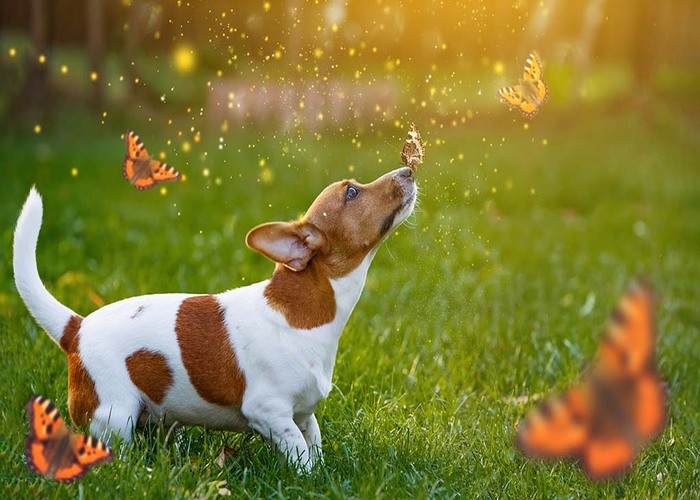
What Are the Dog Spring Fever Symptoms
Spring fever can cause a drastic behavioral change in dogs.
While these symptoms vary per dog, the common element in spring fever dogs is hyperactivity.
Increased Energy Level
As mentioned, sunlight exposure for dogs can make them significantly active.
How, you might ask?
It's because of melatonin, a hormone that compels your dog to sleep.
The more melatonin your dog has in its body, the easier it is for it to feel sleepy.
And a 2018 study discusses the relationship between seasonal changes and melatonin levels in hamsters.
The study revealed :
The short photoperiod promotes pineal melatonin production. As a result, during the winter, animals have significantly higher levels of melatonin than in summer.
What this means is that your dog tends to be more active in spring because of reduced melatonin levels.
RELATED: WHY AND HOW MUCH DO DOGS SLEEP?
Earlier Wake-Up Time
Ever noticed a change in your dog’s sleep cycle?
Like how your dog woke up earlier in springtime than it did when it slept in winter?
You can also blame sunlight for that!
Your dog’s circadian rhythm responds to sunlight as a signal to stay awake and alert.
This is where spring comes into play.
During springtime, the daytime becomes longer.
This means there’s earlier sunlight exposure in the spring season than in winter.
Essentially, spring shifts your dog’s sleep cycle backward and makes earlier wake-up call time for the dog.
RELATED: DO DOGS HAVE A SENSE OF TIME?
Agitation
You may also observe that your dog easily shows signs of hostility during spring.
This agitation may come from your dog’s territorial behaviors toward wild animals.
And it comes more often in spring when the animals are out than in winter.
Sometimes in the spring season, wild animals like birds, raccoons, and squirrels explore the area too deep into residential areas.
It's where they crowd homes and become an annoyance.
And if you own a guard dog, chances are, they'll become protective of their territory.
Worse is when your dog shows aggression as a means to thwart them out of its space.
Unfortunately, their agitation may be challenging to manage.
So, you might need extra patience and effort in training your pooch at this time.
It may even bare its irritated agitation to you!
Heightened Curiosity
From the smell alone, spring aromas can overwhelm your dog’s senses.
Our pet dogs can smell better than us, humans.
How?
Well, it's because they have much more smelling receptors compared to us.
Unfortunately, however useful their sense of smell is, it can pose problems during springtime.
At some point, these spring scents can arouse curiosity in your already overstimulated pet.
It even causes a sensory overload that can confuse your dogs and even irritate them.
Furthermore, small critters entice the predator instinct of dogs to chase.
Their movements excite dogs to copy their energy and chase after them.
Overheating
Dogs can experience overheating during springtime.
Your dog will roam around the vicinity to experience the new season.
All these running, chasing, and excitement will produce body heat for your dogs.
What's more, is that the heat from the sun can add up and build stress on your dogs.
If you don't cool down your dog, it can suffer from heat stroke and other serious health concerns.
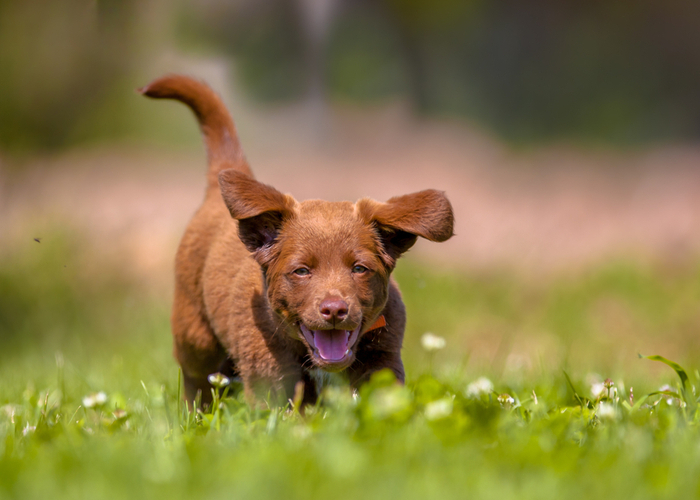
How Do You Deal with Spring Fever in Dogs?
Spring fever seems like an inevitable inconvenience for dog owners like you.
But fortunately, there are many ways to handle your spring fever dogs.
You’d be surprised to learn that this unavoidable spring trouble can easily be managed.
So how do you deal with spring fever in dogs?
Stimulating Your Dog
If you let springtime elements stimulate your dog, you’ll lose control over your fido.
Instead, you can intentionally stimulate the dogs yourself.
These stimulations can be in the form of an object or activity.
What's more important is you're piquing your dog's interest to bond with you instead.
Some good examples of stimulating objects are:
- Chew toys
- Dog puzzles
- Food
Meanwhile, some good examples of dog spring activities that are mentally stimulating to dogs:
- Dog walk
- Introducing a trick
- Completing an obstacle course
Practice Recall Training
Effective recall training can prove to be helpful in situations where your dog is wandering off.
Reliable recalls mean a guarantee that your dog will come to you when you call it.
Even if your dog is interacting with the various stimuli of nature, a recall should cue them to return to you.
So how do you train your dog for recalls?
The trick is giving your dog a recognizable name and giving it treats whenever it's approaching.
Eventually, you can give verbal cues like “Come here” and build layers of difficulties from there.
Take Your Dog for a Walk
Walking is one of the easiest, safest, and best exercises for your dogs.
Because walking is a physical activity, it expels the excess energy that your dog has this spring.
Walking may look like it’s not enough as exercise, but it does keep your dog’s excitement at bay.
Aside from it being a physical exercise, taking your dog for a walk is also a mental exercise for them.
As you walk your dog to a destination, it will be encountering more stimuli and chase triggers.
But with your leash in place, it will be a mentally challenging stimulation for your dog to control their impulses while walking.
Think of it as a detox session for your dog.
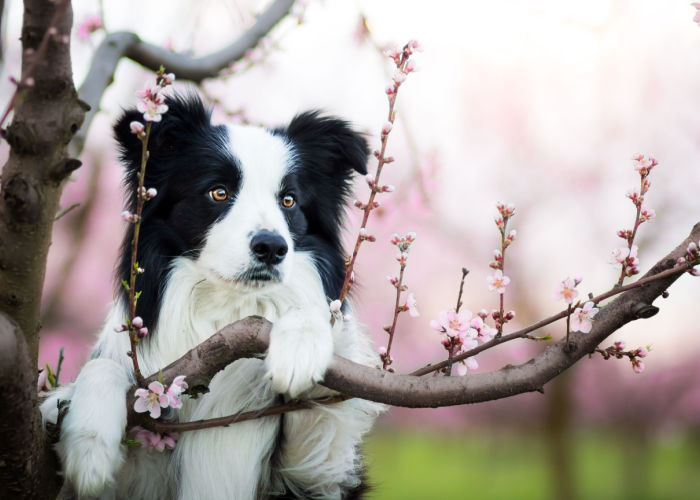
Spring Fever in Dogs: Dangers of Spring
Spring doesn’t only bring just more sunlight to your dogs but dangers as well!
And with your spring fever dog carelessly acting on its impulse, it’s recklessly at risk of various dangers of spring.
Here are some environmental risks and dangers that your dogs may encounter during their spring fever instances.
Allergies
Spring brings a lot of allergens into the air, which your dog can pick up as it explores the recent season change.
Pollens alone from the sprouting flowers are enough to trigger your dog’s allergy.
If these flower particles can cause you to sneeze profusely, imagine how these pollens can put your dog in a discomforting state.
Your dogs can also get allergies from insect bites like mosquitoes, bees, and even ants.
Furthermore, mites, fleas, and even lice are allergens themselves.
Even the slightest contact with them will trigger your dog’s immune system and cause inflammation.
Some of the signs that your dog has spring allergies are:
- Runny nose
- Frequent sneezing
- Scooting their bottom across the floor
- Constant scratching
- Sore Eyes
Toxic Plants
Aside from allergies, there are specific plants that can inflict direct health issues on your dog once ingested.
These plants have substances or compounds that are specifically toxic to dogs.
Unfortunately, unsuspecting dogs would likely come across these plants more often and ingest them.
Some toxic plants and flowers that you need to look out for during springtime are:
- Tulips
- Daffodils
- Lilies
- Rapeseed
- Bluebells
RELATED: THE ULTIMATE LIST OF TOXIC AND SAFE PLANTS, SEEDS FOR DOGS
Additionally, here are some symptoms of plant poisoning in your dog:
- Vomiting
- Diarrhea
- Seizures
- Mouth foaming
If in case your dog has ingested these plants, you should monitor their condition and take them to your local vet if symptoms worsen.
Parasites
Parasites are ever-abundant when spring comes.
They, like any other creatures, will bounce back to life right after the winter ends.
Dogs that are exploring the new spring environment can pick up these parasites on the ground or in contaminated water.
Sometimes, a dog can get external parasites like ticks and fleas from an infected dog or a wild furry creature.
Eventually, these parasites will reproduce in dogs and would bring serious health issues to them.
Wild Predators
It turns out that dogs are not at the top of the food chain.
The spring season does not only put an end to small critters’ hibernation but large predators' too.
You would mostly encounter them during spring hikes or when your house is near the woods.
While these predators do not usually prey on dogs, running into them usually leads to dog mortality.
Small dog breeds like Chihuahuas and Terriers will be an easy feast for a lot of carnivorous predators.
Larger dog breeds, on the other hand, are prone to predator aggression, assault, and even injuries.
Some of the large predators that you should look out for are:
- Wolves
- Foxes
- Coyote
- Snakes
- Bears
- Bobcats
Physical Injuries
High energy levels, combined with peak curiosity, spell recklessness and danger for your dogs.
Right when your dog is chasing an object, your pet will pour its focus on its target.
It will disregard its surroundings and even its safety.
Because of this, a lot of dogs will bump into obstacles and even crash.
In some cases, dogs will even fall from a high place after chasing down their targets.
All of these mishaps can cause serious physical injuries to your dogs.
These dog injuries range from bruises, swelling, and even broken bones.
Spring Fever in Dogs: Summary
Spring fever in dogs is not a myth, and its symptoms may appear on your dog once the snow starts to melt.
These prominent causes of spring fever in dogs are longer daytime and excess stimulation to your dog’s senses.
And while calming your dog’s spring-induced hyperactivity can be a daunting task, it doesn’t have to be.
With proper recall training and intentional mental stimulation, you can now counter the effects of spring fever.
Be consistent with these actions, and eventually, you will have better control of your pet’s impulsive behavior during springtime.












